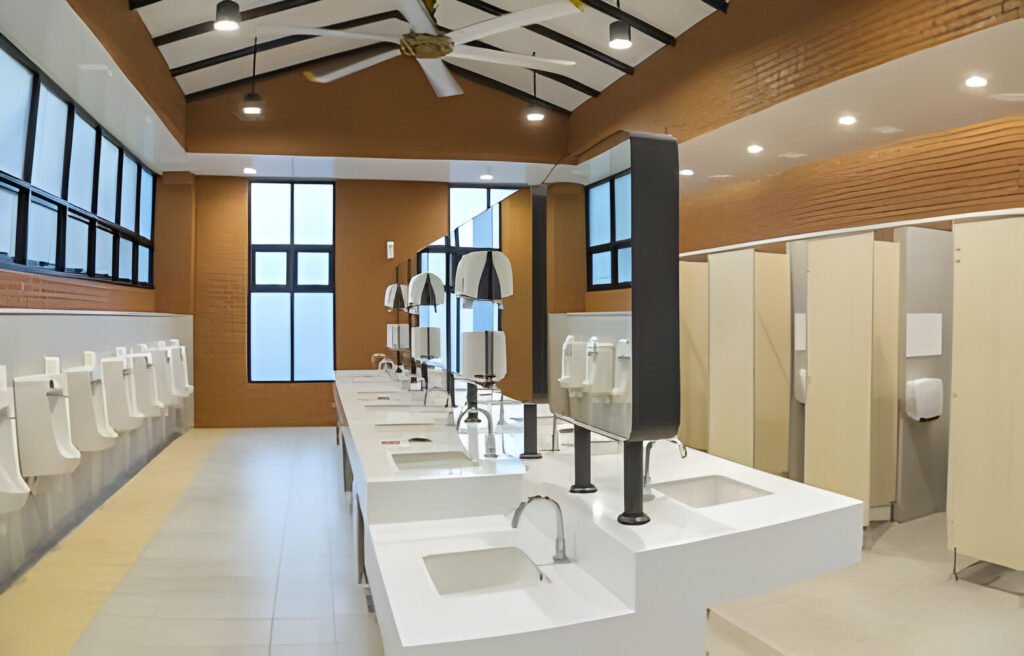In recent times, the significance of workplace hygiene has gained unprecedented attention. The global community has witnessed the profound impact of infectious diseases, underscoring the critical need for maintaining a clean and healthy work environment. As businesses adapt to new norms and employees return to the workplace, elevating workplace hygiene has become a top priority. Here in this blog, we will explore the various facets of workplace hygiene, offering insights, strategies, and practical tips to create a healthier and more productive work environment. So let us start and first understand the importance of workplace hygiene.
Understanding the Importance of Workplace Hygiene
In the quest for organizational success, the well-being of employees is a non-negotiable factor. A clean and hygienic workplace is not merely an aesthetic choice; it directly impacts the physical and mental health of individuals. The correlation between a healthy work environment and employee well-being is profound, influencing factors such as job satisfaction, engagement, and overall quality of life.
In the pursuit of productivity, organizations often overlook the fact that the health of their workforce is a critical determinant of success. Numerous studies have demonstrated the positive relationship between workplace hygiene and employee productivity. A hygienic environment reduces the frequency of illnesses, leading to fewer sick days and increased focus on tasks. Furthermore, employees in a clean and well-maintained workspace exhibit higher levels of creativity and job satisfaction, contributing to a more vibrant and dynamic workplace culture.
Why is hygiene important in the workplace?
Hygiene in the workplace is crucial for several reasons, impacting both the health and productivity of employees as well as the overall success of the organization. Here are some key reasons why workplace hygiene is important:
- Employee Health and Well-being
- A hygienic workplace is fundamental to maintaining the physical health of employees. Regular cleaning and disinfection help prevent the spread of germs and reduce the risk of infectious diseases.
- Improved hygiene contributes to the overall well-being of employees, creating a work environment that promotes good health and reduces the likelihood of illness.
- Reduced Absenteeism
- Workplace illnesses can result in increased absenteeism, leading to decreased productivity. A clean and hygienic environment helps minimize the transmission of germs, ultimately reducing the number of sick days taken by employees.
- Enhanced Productivity
- A clean and organized workspace fosters a more conducive environment for work. Employees are better able to focus on their tasks, leading to increased productivity and efficiency.
- Improved workplace hygiene has been linked to higher levels of job satisfaction and motivation among employees, contributing to a positive and engaging work culture.
- Prevention of Workplace Hazards
- Proper hygiene measures extend beyond cleanliness to include safety practices. Regular cleaning helps identify and address potential hazards in the workplace, reducing the risk of accidents and injuries.
- Positive Workplace Culture
- A commitment to workplace hygiene reflects an organization’s dedication to the well-being of its employees. This commitment contributes to a positive workplace culture, fostering a sense of care and concern for the workforce.
- Professional Image
- A clean and well-maintained workplace projects a positive image to clients, customers, and visitors. It communicates professionalism and attention to detail, enhancing the reputation of the organization.
- Compliance with Regulations
- Many regions have specific regulations and standards regarding workplace hygiene and safety. Adhering to these regulations is not only a legal requirement but also essential for avoiding fines and legal complications.
- Prevention of Cross-Contamination
- In shared workspaces, cross-contamination is a significant concern. Proper hygiene practices, such as regular hand washing and sanitizing, help prevent the spread of germs among employees.
- Employee Morale and Satisfaction
- A clean and hygienic workplace contributes to a comfortable and pleasant atmosphere. This, in turn, positively influences employee morale and satisfaction, leading to higher levels of engagement and loyalty.
- Prevention of Long-Term Health Issues
- Exposure to unhygienic conditions over an extended period can lead to long-term health issues for employees. Workplace hygiene measures play a preventive role in avoiding chronic health problems related to poor environmental conditions.
Now at last let us discuss some of the hygiene practices in the workplace because Hygiene practices in the workplace are essential for maintaining a clean and healthy environment. These practices include:
- Regular Handwashing: Employees should wash their hands thoroughly with soap and water regularly, especially after using the restroom, before eating, and after touching shared surfaces.
- Hand Sanitization: Providing hand sanitizers in common areas encourages employees to maintain hand hygiene when soap and water are not readily available.
- Surface Cleaning and Disinfection: Regular cleaning and disinfection of frequently-touched surfaces, such as doorknobs, light switches, keyboards, and shared equipment, help prevent the spread of germs.
- Workspace Organization: Encouraging employees to keep their workspaces tidy reduces the risk of clutter and facilitates easier cleaning. This includes regularly wiping down desks, keyboards, and computer mice.
- Proper Waste Management: Implementing effective waste disposal practices, including the timely removal of trash and the use of designated bins for recycling and general waste, contributes to a clean and organized workplace.
- Personal Hygiene: Encouraging employees to practice good personal hygiene, such as covering their mouths and noses when coughing or sneezing, helps prevent the spread of respiratory infections.
- Ventilation: Adequate ventilation ensures a constant flow of fresh air, reducing the concentration of airborne contaminants and promoting a healthier indoor environment.
- Use of Protective Equipment: Providing and encouraging the use of personal protective equipment, such as gloves or masks, in situations where it is deemed necessary for specific tasks or activities.
- Promotion of Health and Well-being: Employers can support employee well-being by promoting healthy habits, including regular exercise, a balanced diet, and access to wellness programs.
- Educational Initiatives: Conducting training sessions and awareness programs to educate employees about the importance of workplace hygiene and providing guidance on best practices.
Conclusion
As a conclusion, Elevating workplace hygiene is not a one-time task but an ongoing commitment to the health and well-being of the workforce. It’s not only about maintaining a clean environment, but it is a holistic approach to ensuring the health, safety, and well-being of employees. By understanding the profound link between hygiene and employee well-being, cultivating a hygiene-conscious culture, designing workspaces with cleanliness in mind, implementing robust cleaning protocols, leveraging technology, and supporting employee well-being beyond physical health, organizations can create a workplace that not only protects its most valuable asset i.e. its people but also fosters a culture of productivity, innovation, and success. As the workplace continues to evolve, investing in hygiene is not just a necessity; it is a strategic imperative for organizations looking to thrive in a dynamic and challenging world.






